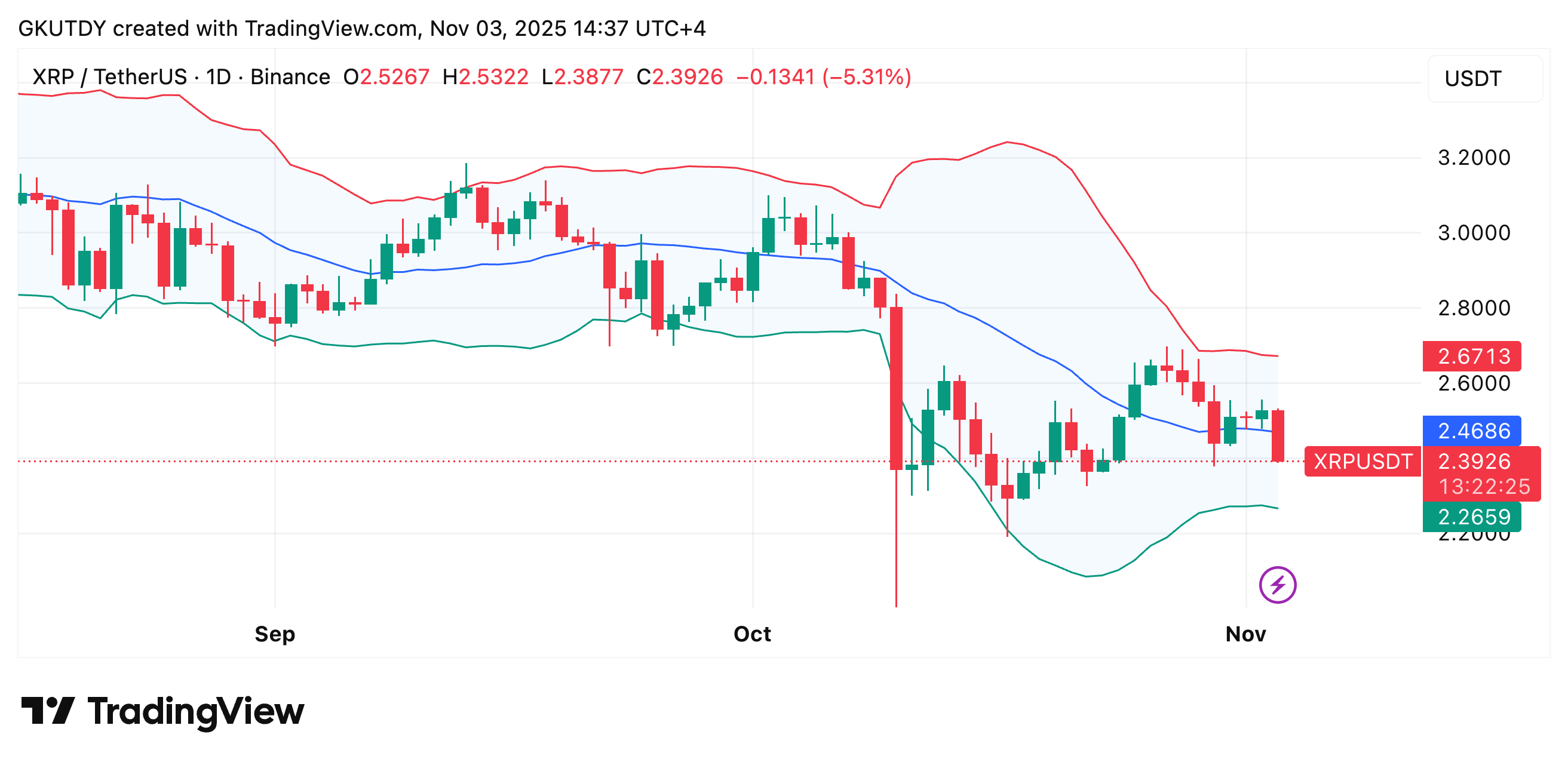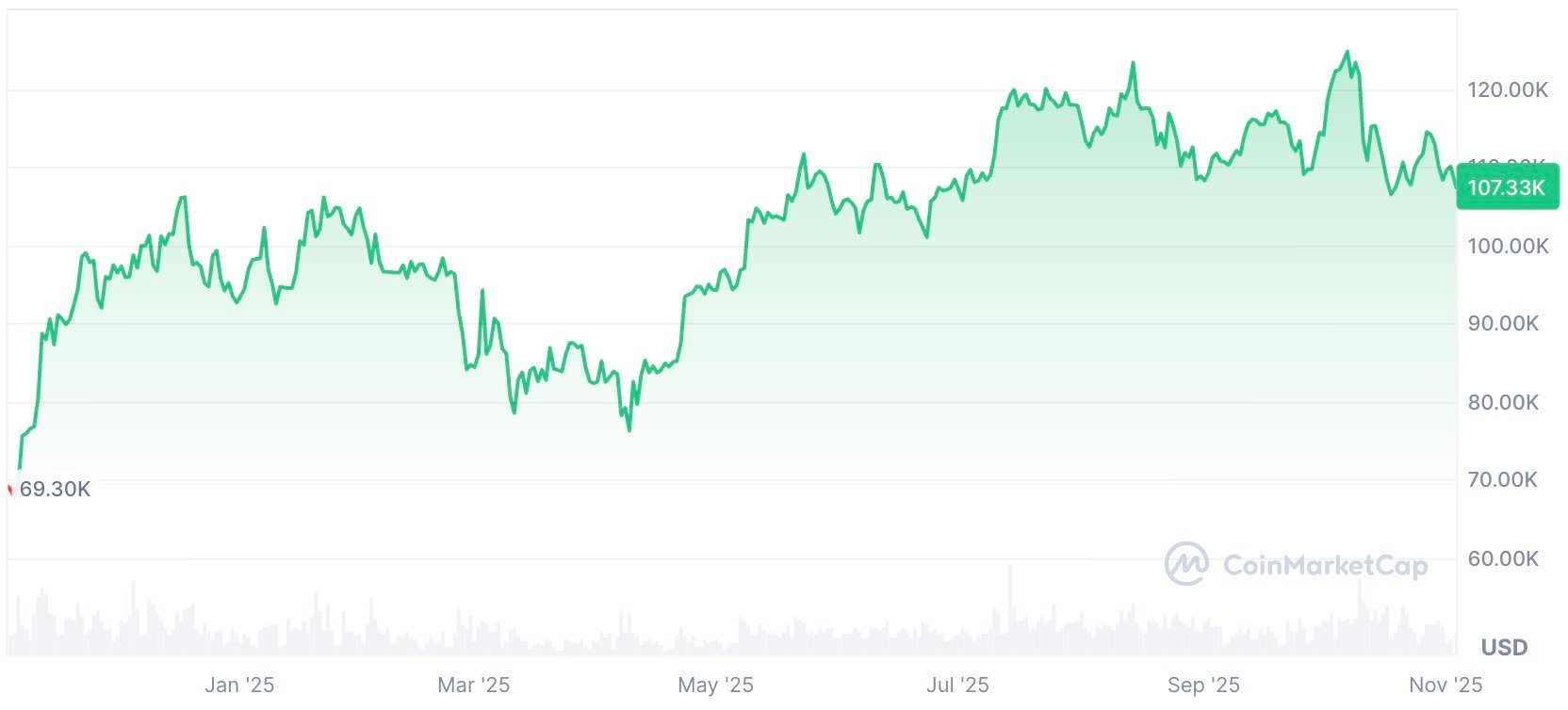The Balancer DeFi protocol suffered a major hack resulting in approximately $128.6 million in losses across multiple blockchains, highlighting ongoing vulnerabilities in decentralized finance. This incident, confirmed by security firm PeckShield, involves drained treasury wallets and has prompted swift withdrawals from affected pools.
-
Balancer Hack Details: Losses include 6,587 WETH ($24.46 million) and assets on chains like Arbitrum and Berachain, totaling $128.64 million.
-
XRP price analysis shows bearish signals below $3, with Bollinger Bands indicating support at $2.26 and resistance at $2.70-$2.80.
-
Bitcoin is entering an IPO-like phase, according to Wall Street veteran Jordi Visser, shifting from early holders to institutional accumulation with reduced volatility.
Discover the Balancer DeFi hack’s impact on crypto markets, XRP’s bearish outlook below $3, and Bitcoin’s IPO transition. Stay informed on 2025’s key events—read now for expert insights.
What is the Balancer DeFi Hack and Its Impact on the Crypto Market?
The Balancer DeFi hack involved a coordinated exploit that drained approximately $128.6 million from the protocol’s treasury wallets across seven blockchains, as reported by cybersecurity firm PeckShield. This incident targeted wrapped ETH derivatives and staking tokens, marking one of the largest DeFi breaches in recent years. The attack has eroded trust in liquidity pools, leading to over $400 million in immediate withdrawals and contributing to a broader market downturn.
How Did the Balancer Exploit Unfold Across Multiple Chains?
The exploit began overnight with simultaneous drains from Balancer’s vaults, suggesting a possible compromised admin key or a shared smart contract flaw. PeckShield’s analysis revealed transfers including 6,587 WETH valued at $24.46 million on Ethereum mainnet, 6,851 osETH at $26.86 million, and 4,260 wstETH at $19.27 million. Additional losses hit Arbitrum ($6.86 million), Berachain ($12.86 million), BASE ($3.9 million), SONIC ($3.44 million), Optimism ($1.58 million), and Polygon ($232,000), totaling $99 million in ongoing asset movements between mainnet and layer-2 solutions.
DeFi sector data from risk monitoring platforms indicates this is Balancer’s most significant loss since 2023, amid sluggish total value locked (TVL) recovery. Year-to-date DeFi exploits in 2025 have surpassed $2.8 billion, forcing protocols into crisis response modes. Ethereum’s price dipped 5% to around $3,700, blending hack-related fear with macroeconomic pressures.
Audit teams are now conducting rapid investigations, while the community grapples with diminished liquidity. This event underscores persistent challenges in multichain environments, where interconnected vulnerabilities amplify risks. Experts emphasize the need for enhanced multi-signature safeguards and rigorous code audits to prevent future incidents.
Frequently Asked Questions
What Caused the $130 Million Balancer DeFi Hack in 2025?
The Balancer hack stemmed from a multichain exploit targeting treasury wallets, likely via a compromised admin key or contract vulnerability, according to PeckShield. It affected assets like WETH and wstETH across Ethereum, Arbitrum, and others, resulting in $128.6 million in losses and prompting emergency measures in the DeFi ecosystem.
Is XRP Headed Below $3 Based on Current Technical Indicators?
Yes, XRP’s position below the daily Bollinger Band midband at $2.47 signals bearish momentum, with support at $2.26 and resistance capping gains at $2.70 to $2.80. Historical patterns suggest a potential 2-3 week decline before reversal, making $3 unlikely without a volume surge above $2.90.
Key Takeaways
- Balancer Hack Severity: The $128.6 million loss across chains highlights DeFi’s multichain risks, with YTD exploits exceeding $2.8 billion and immediate TVL drops of $400 million.
- XRP Bearish Setup: Trading at $2.40, XRP faces downward pressure from Bollinger Bands, targeting $2.10 support unless it closes above $2.70.
- Bitcoin’s IPO Phase: As per Jordi Visser, BTC’s consolidation at $107,000 reflects institutional redistribution, reducing extreme drawdowns and aligning with corporate adoption trends.

XRP/USD by TradingView
Bitcoin’s Shift to Institutional Ownership
Wall Street veteran Jordi Visser describes Bitcoin’s current market dynamics as akin to an initial public offering (IPO) distribution cycle, where early holders diversify while institutions accumulate. This transition broadens ownership from a few whales to millions, diluting sell-off impacts and fostering stability. Bitcoin’s price, hovering at $107,000 after a 3% weekly slip, exemplifies this calmer redistribution phase in its 15-year history.
Visser notes weakening correlations with NASDAQ, positioning BTC as a diversification asset for corporate balance sheets. He states, “80% drawdowns are in the past; 10x rallies become 3x, but the network finally qualifies for corporate balance sheets.” This perspective aligns with observations from financial analysts tracking ETF inflows and on-chain metrics, which show reduced volatility as liquidity matures.

Bitcoin Price by CoinMarketCap
The broader crypto landscape opened the week with subdued volumes and heightened caution, as Ethereum fell below $3,700 and most top-10 assets printed losses. The Balancer incident exacerbated liquidity concerns, but institutional interest in Bitcoin provides a counterbalance, potentially stabilizing sentiment amid upcoming U.S. economic data releases.
Conclusion
The Balancer DeFi hack and XRP’s technical downturn underscore vulnerabilities and bearish pressures in the crypto space, while Bitcoin’s IPO-like phase signals maturing institutional adoption. As DeFi losses mount and technical indicators guide trader caution, the market eyes recovery through enhanced security and economic clarity. Investors should monitor support levels and regulatory developments for opportunities in this evolving landscape—stay vigilant for the next bullish catalyst in 2025.
